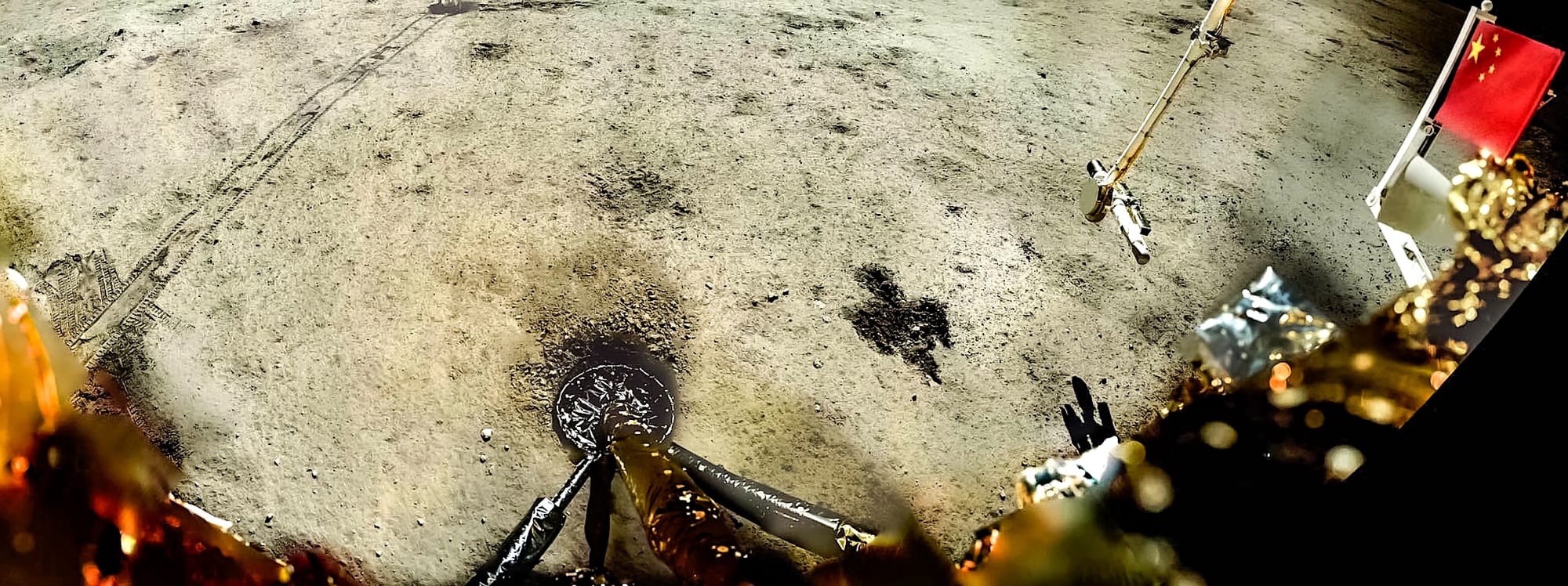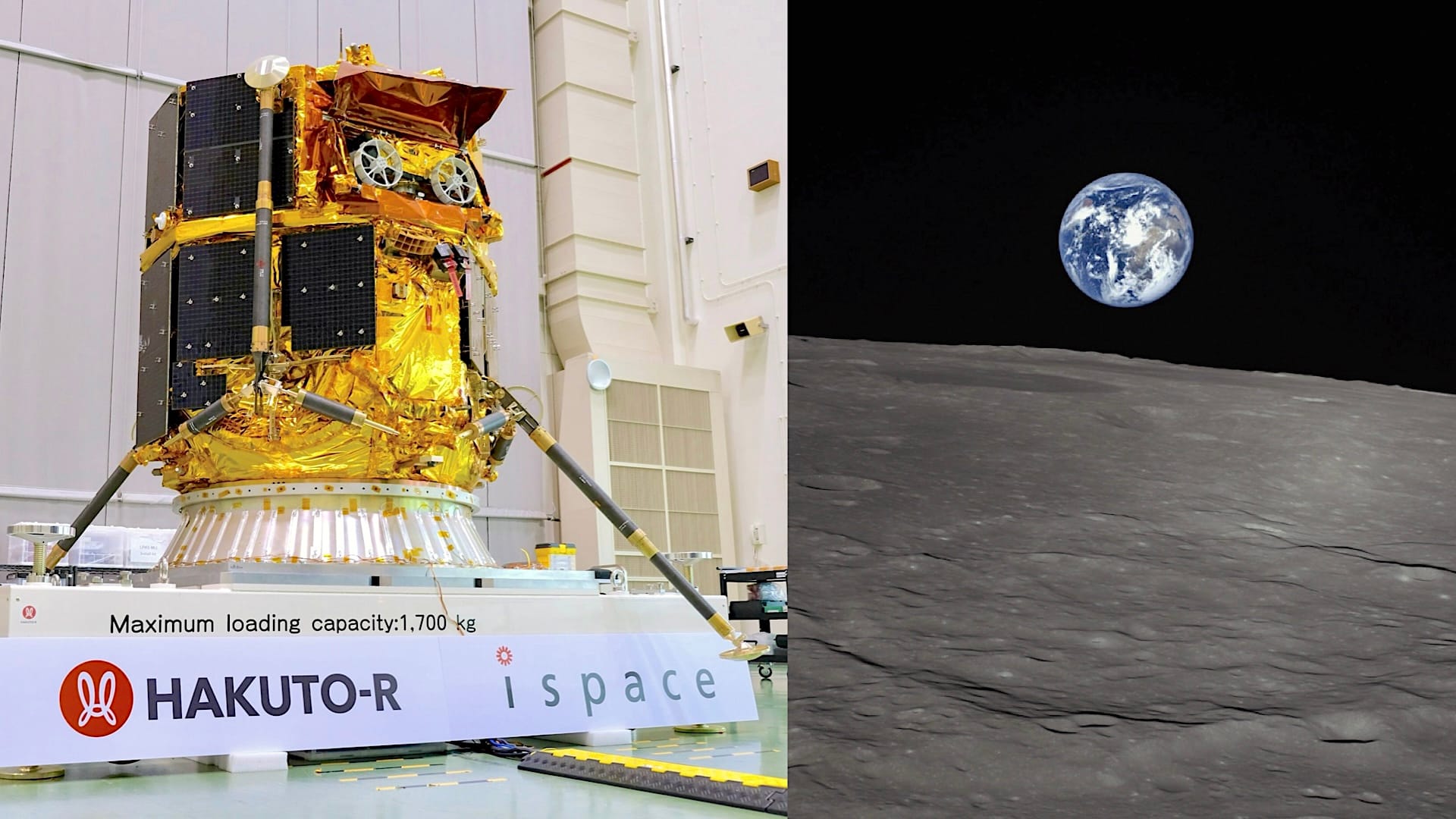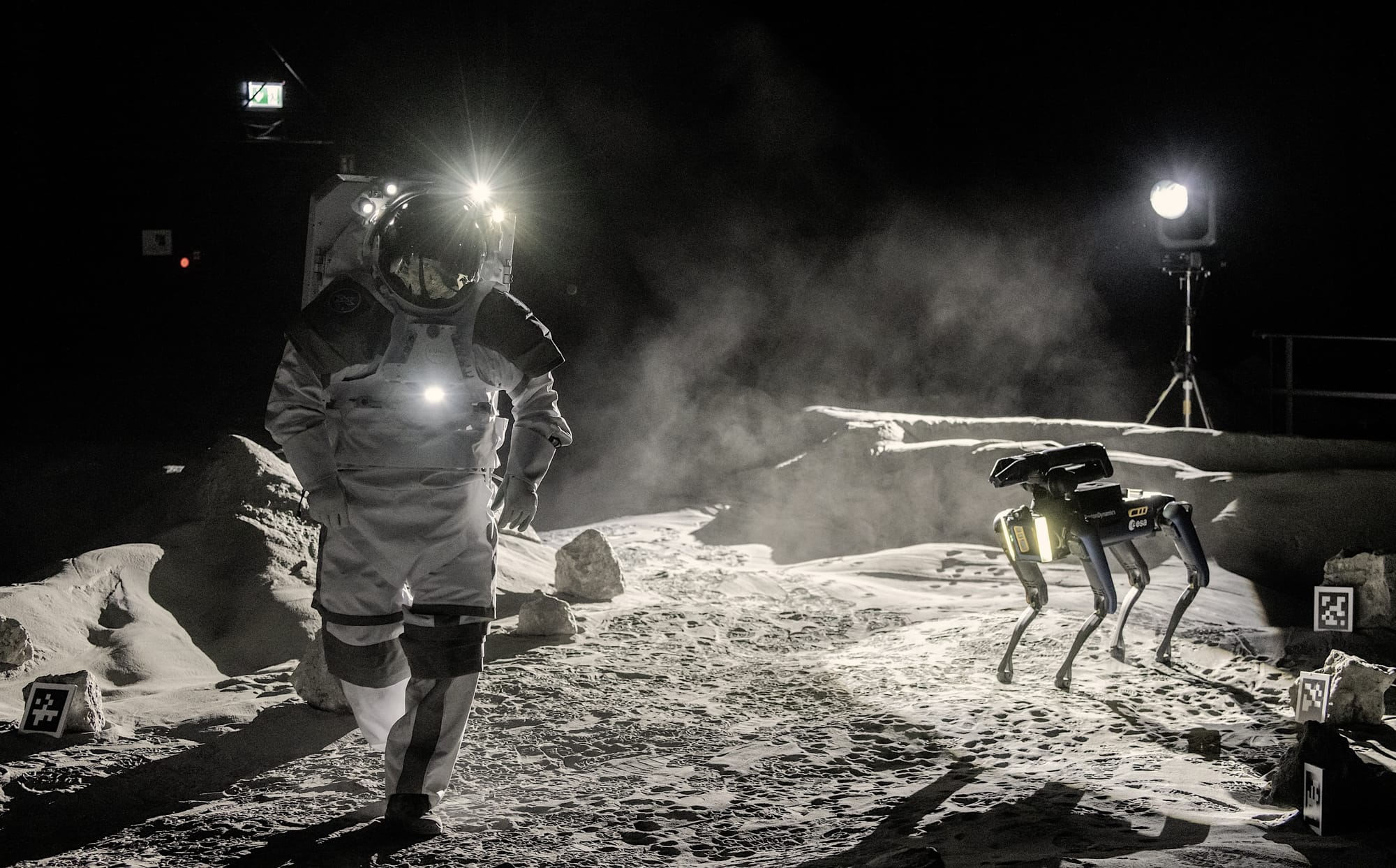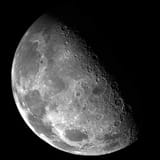Moon Monday #231: Achievements and shortfalls in Moon exploration this half year
A review of notable developments by country or region.
2025 is halfway through, and we’ve already seen a raft of lunar exploration achievements—as well as several sad shortfalls—from organizations worldwide. Here’s a curated list of it all, each linked for understanding the context of its development. Just like my list of 2024 in lunar exploration, I’ve made a conscious effort to highlight events and trends that actually happened instead of amplifying speculative coverage of what might or might not transpire—the latter of which seems to consume many media outlets too much. If someone asks you what’s happening at the Moon, say all of this is. 🌗
China

- Chinese researchers published a range of papers on their recent lunar exploration outcomes as well as ongoing scoping of future ambitions. This includes unique results from lunar farside samples brought to Earth last year by CNSA’s Chang’e 6 mission, such as confirming that our young Moon was fully molten, determining the age of the Moon’s largest impact basin, and that the farside mantle contains less water than within the nearside. All of these are helping scientists understand our Moon’s evolution and why its farside is so different from the nearside we know and see—and what it all tells us about the evolution of our Solar System.
- China also announced the first set of international organizations whose proposals were selected to study unique lunar samples fetched to Earth by CNSA’s Chang’e 5 mission in 2020. And, this month China displayed Chang’e samples at the UN for the first time.
- Throughout the past several months, China cemented and further advanced its lead in building a lunar communications and navigation network. The DRO-A and DRO-B twin satellite pair demonstrated automated navigation at the Moon—despite a failure of their launch vehicle’s upper stage leaving them stranded in Earth orbit and causing structural damage. China also achieved daytime Earth-Moon laser distance measurements with a retroreflector on the Tiandu 1 spacecraft—the first for a lunar orbiter. These and other developments have cumulatively provided China an edge over the US in sustaining future crewed Moon missions.
- Building on international cooperation in the upcoming Chang’e 7 mission, CNSA announced more international payloads that will be onboard Chang’e 8 to explore the Moon’s south pole for water ice and other resources.
- In February, the China Manned Space Engineering Office (CMSEO) announced a call for Chinese organizations to bid for making a lunar mapping satellite in support of China’s crewed landing missions—which start later this decade. The satellite’s mandate is to obtain high-precision mineral, topographic, and geomorphic data of the Moon’s low-latitude regions. This month, the China Manned Space Agency (CMSA) successfully tested the launchpad escape system of China’s next-generation Mengzhou spacecraft, a variant of which will carry astronauts for Moon missions.
The US
CLPS

- With rigor and abundant caution, Firefly’s Blue Ghost spacecraft part of NASA’s CLPS program brought the first true soft landing for the US in the 21st century, involving operations of its science & technology payloads, a precision landing demonstration, the first GPS/GNSS lock on the Moon, and a stunning solar eclipse capture.
- In March, Intuitive Machines’ second CLPS craft hard-landed on the Moon’s south pole and came to rest on its side, which led to the mission being unsuccessful across all of NASA’s primary goals related to learning about local water ice.
- NASA’s VIPER rover cannot catch a break. Originally meant to reveal the first set of hard facts about the Moon’s polar water ice deposits, NASA instead cancelled VIPER’s CLPS flight last year citing cost challenges. The agency then tried finding a private company that will fly and operate the rover at its own cost, an approach many argued decidedly fails at VIPER’s original goal. After evaluating the proposals submitted by private companies, NASA has come to the same conclusion. The agency will restructure the solicitation to elicit stronger proposals that hopefully stay closer to VIPER’s original science goals.
- Astrobotic completed testing their lunar navigation and guidance systems to be onboard the company’s upcoming Griffin CLPS lander. The large lander’s primary payload will be the FLIP rover by Astrolab (a Moon Monday sponsor), which got manifested recently after NASA decided not to fly VIPER aboard. Astrobotic also announced that its first CubeRover has successfully passed the standard suite of space environmental tests ahead of its flight on this Griffin lander.
- Firefly and the UAE space agency MBRSC announced that the former’s second CLPS lander will carry the second UAE rover to the Moon’s farside next year.
- Firefly also announced the Ocula lunar imaging service, which can fill some—but not all—critical gaps for NASA.
Artemis

- Preparations continue to fly the four Artemis II astronauts around the Moon and back next year. Technicians working at NASA completed integrating the SLS rocket sans the Orion spacecraft in May while Lockheed Martin delivered said capsule to NASA for further processing and assembly. And, teams and the crew are practicing sea recovery procedures for when the capsule would splash on Earth at the end of the mission.
- With three back-to-back failures of SpaceX Starship and an explosion during testing this month, NASA’s long road to putting humans on the Moon with Artemis III has significantly slowed down. While the Moonsuits from Axiom Space have been facing its own delays, Starship now seems to be the pacing item for NASA to land humans on the Moon this century. Given the numerous milestones left before a Starship can carry astronauts, it might not meet the US’ self-imposed goal of “beating China” to the Moon.
- In the meanwhile, Blue Origin’s successful launch of its New Glenn rocket in January finally opened up a second line of pursuit for NASA to send lunar astronauts vis-à-vis Blue Moon. Blue Origin aims to launch its first two robotic Moon landers by next year as practice ahead of crewed flights—but with nearly no NASA payloads onboard.
- The Trump administration’s budget request for NASA for FY 2026 proposes a historic ~25% cut but continues support for the crewed Artemis II and III missions. Notably, the budget proposes cancelling SLS and Orion from Artemis IV onward as well as the NASA-led international Gateway orbital habitat. It proposes changes to CLPS and several lunar science programs too. The US Congress will review these proposals in the coming months for appropriation or changes. Notably, the proposed budget does nothing to address the fact that the US is failing to explore lunar water as the principal goal of Artemis.
- In February, Blue Origin simulated two minutes of lunar gravity inside the New Shepard crew capsule. NASA funded this project, and tested 17 lunar-relevant payloads onboard. As such, NASA continues leveraging New Shepard’s suborbital flights to help verify and refine new lunar technologies at relatively low costs before they can be sent to the Moon.
- Zeno Power raised $50 million, a major chunk of which will go towards developing and demonstrating the company’s nuclear electric power system on the Moon for NASA by 2027.
Many thanks to Open Lunar Foundation for sponsoring this week’s Moon Monday! If you too appreciate my efforts to bring you this curated community resource for free and without ads, support my independent writing. 🌙
India

- Results from the thermal probe experiment on India’s Chandrayaan 3 lander have expanded the possible locations for finding water ice beyond the Moon’s poles, thereby benefiting future scouting missions.
- India approved the joint ISRO-JAXA Chandrayaan 5 / LUPEX mission to drill and analyze water ice on the Moon’s south pole. The mission will be a giant leap in lunar capabilities for both ISRO and JAXA. And it can provide NASA with data critical for Artemis planning currently missing from US missions.
- India’s Chandrayaan 3 rover may or may not have stumbled upon the Moon’s mantle material when studying the composition of the local lunar soil using its X-ray spectrometer.
- ISRO’s Chandrayaan 2 orbiter has helped international researchers produce a galore of science results recently: from lunar geological studies to characterizing the lunar environment as well as aiding NASA in assessing landing sites for crewed Artemis missions.
More Asia-Pacific

- Earlier this month, ispace Japan’s second Moon lander RESILIENCE crashed on the Moon due to performance issues of the laser rangefinder. The outcome underscores the need for resilience in private lunar landing missions through expansive and collaborative testing, something former NASA astronaut and current ispace US Chair Ron Garan has also vouched for. One must note that ispace has continued its remarkable transparency from the first failed landing mission, sharing detailed findings of what went wrong in mere weeks.
- South Korea approved plans made by the country’s newly forged space agency KASA to build a Moon lander by 2032 as part of a broader $500+ million annual investment in indigenous space technologies. South Korea is also transforming the former mining site of Taebaek into a testing ground for advanced mobile lunar exploration technologies, owing to the mine’s environmental resemblance to the darkness, coldness, and ruggedness of the Moon’s south pole.
- The Australian Space Agency (ASA) continues funding local companies to build lunar technologies. In February, ASA particularly supported EntX to build a radioisotope heater unit to enable future landers and rovers to survive frigid lunar nights.
Europe

- ESA has started testing instruments, mission concepts, and modern astronaut tools at its new, versatile Moon-simulating LUNA facility in Germany. A simulated habitat module now adjoins LUNA to better test complex mission scenarios where humans and robots interact in varied ways for long periods.
- ispace’s European subsidiary led team won a ~€2.7 million ESA contract to collaborate with the agency on the MAGPIE rover mission to study lunar polar water ice and other such volatiles.
- In January, ESA announced a $882 million contract to a European consortium led by Thales Alenia Space for developing the Lunar Descent Element of the agency’s upcoming large Moon lander Argonaut. Launching no earlier than 2031, Argonaut will be capable of deploying about 2,000 kilograms of payload on the Moon. ESA hopes for Argonaut to support Artemis with navigation and communications equipment, cargo supplies for astronauts, large rover deliveries, and habitat-related infrastructure such as lunar oxygen extractors and solar arrays. It will also leverage ESA’s upcoming Moonlight navcom constellation for precision landings.
- The 2025 European Lunar Symposium was held from June 22–27 with a focus on science & engineering presentations. The abstracts and documents from the conference are open access, and recorded talks will be available later on the SSERVI YouTube channel.
On cooperation and collaboration
- The US-led Artemis Accords for cooperative lunar exploration has onboarded 55 countries with the latest addition of Norway.
- China formally welcomed India to cooperate on Moon missions and the Sino-led ILRS Moonbase project.
- Why Moon missions need their own Wikipedia and beyond
- As lunar missions converge globally, we need to preserve future exploration and science
- Moon missions can be both cheaper and safer if more countries share navigation infrastructure
- How information sharing would enable peace and prosperity in Moon missions
- Western media narratives misrepresent Chinese space, which reduces trust and deters cooperation and collaboration.
Originally published by me on the blog of Open Lunar Foundation (a Moon Monday sponsor) as their Science Communications Lead. The article is republished here on my blog with a few additions and tweaks to capture developments that took place after the first publish.
